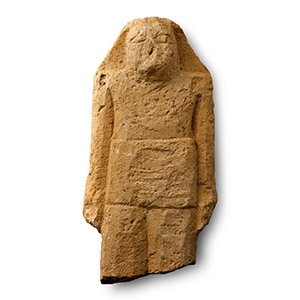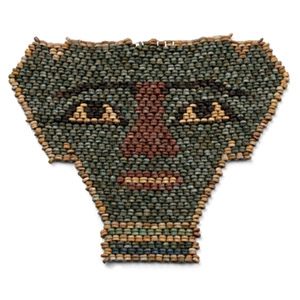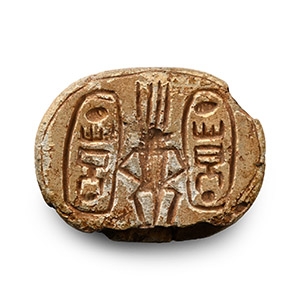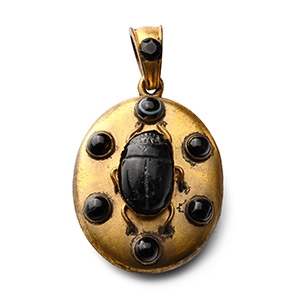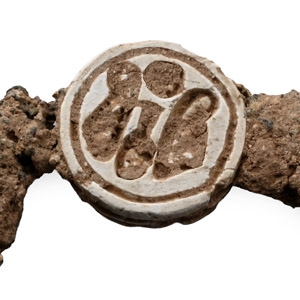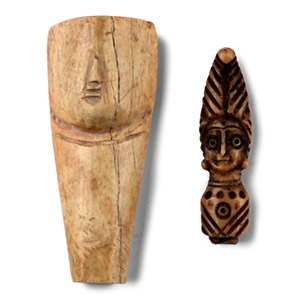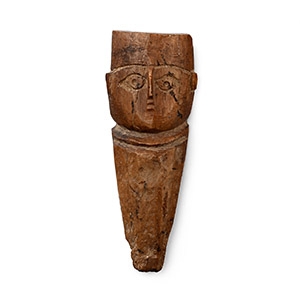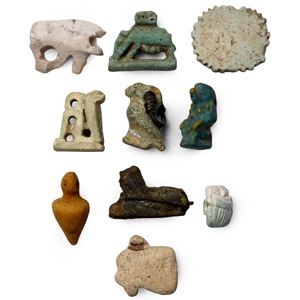Home > Auctions > 9 - 17 September 2025
Ancient Art, Antiquities, Books, Natural History & Coins
Ex London, UK, gentleman 1980-1990s.
This lot is accompanied by an illustrated lot declaration signed by the Head of the Antiquities Department, Dr Raffaele D'Amato.
Amulets in the form of poppies were used to heal and alleviate pain and to ward off death. These types of amulets were also linked to Osiris, the Egyptian deity of agriculture, death, and the afterlife.
From a Swiss private collection.
Acquired in Zurich in 1999.
From the collection of G.M.R.H., London, UK.
This lot is accompanied by an illustrated lot declaration signed by the Head of the Antiquities Department, Dr Raffaele D'Amato.
From the private collection of a Canadian gentleman living in Essex, UK, formed since the 1920s-circa 1990.
Property of an Essex lady until the late 1990s; thence by descent.
From the private collection of an Essex gentleman since the late 1990s.
This lot is accompanied by an illustrated lot declaration signed by the Head of the Antiquities Department, Dr Raffaele D'Amato.
Cf. Manley, B., and Dodson, A., Life Everlasting. National Museum of Scotland Collection of Ancient Egyptian Coffins, Edinburgh, 2010, p. 114, no. 43, for a bead mummy shroud with a face similar in style and colour.
Ex London, UK, gentleman's collection, 1990s.
This lot is accompanied by an illustrated lot declaration signed by the Head of the Antiquities Department, Dr Raffaele D'Amato.
Cf. Petrie, W.M.F., Scarabs and Cylinders with Names, London, 1917, pl. XXIX, no. 139, for a scarab design including a central Bes with a Thutmose III cartouche above.
The royal name is incorrectly written, containing two sun discs rather than one, suggesting it may be of Levantine manufacture. Thutmose III, a dynamic New Kingdom pharaoh celebrated centuries after his death, frequently appears on scarabs during the Late Period. From the New Kingdom onwards, Bes became one of ancient Egypt's most popular apotropaic deities. Despite his fearsome appearance, Bes served as the patron and protector of pregnant women and children, and was also believed to shield them from snakes. The combination of Thutmose III and Bes harnessed both royal and divine protection.
From a 19th century collection based on the locket.
Acquired on the UK art market.
From the collection of G.M.R.H., London, UK.
This lot is accompanied by an illustrated lot declaration signed by the Head of the Antiquities Department, Dr Raffaele D'Amato.
Ex London, UK, art market, 1990s.
From a private UK collection.
This lot is accompanied by an illustrated lot declaration signed by the Head of the Antiquities Department, Dr Raffaele D'Amato.
Cf. Petrie, W.M.F., Button and Design Scarabs, London, 1925, pl. X, nos. 430 and 432, for discoids with rosette designs.
Part of a group excavated by Petrie at Gurob, latterly in a London, UK, collection.
This lot is accompanied by an illustrated lot declaration signed by the Head of the Antiquities Department, Dr Raffaele D'Amato.
From the collection of a gentleman, acquired on the London art market in the 1990s.
This lot is accompanied by an illustrated lot declaration signed by the Head of the Antiquities Department, Dr Raffaele D'Amato.
Cf. Shatil, A., ‘Bone figurines of the early Islamic period: the so-called “Coptic dolls” from Palestine and Egypt’, in Vitezović, S. (ed), Close to the Bone: current studies in bone technologies, Belgrade, 2016, for a discussion of the emergence of Coptic bone figurines, including examples similar to the larger figurine.
The smaller item is possibly the finial from a decorative hair pin (Cf. Petrie, W.M.F., Objects of Daily Use, Warminster, 1972, pl. XIX, no. 81, for a complete example).
Property of a London gentleman; acquired in the 1970s.
From the private collection of John Meredith, acquired since the 1990s; thence by descent.
This lot is accompanied by an illustrated lot declaration signed by the Head of the Antiquities Department, Dr Raffaele D'Amato.
Cf. Shatil, A., ‘Bone figurines of the early Islamic period: the so called “Coptic dolls” from Palestine and Egypt’, in Vitezović, S. (ed), Close to the Bone: current studies in bone technologies, Belgrade, 2016, for a discussion of the development of Coptic bone figurines with examples.
From an early 20th century collection.
This lot is accompanied by an illustrated lot declaration signed by the Head of the Antiquities Department, Dr Raffaele D'Amato.
Ex London, UK, gentleman 1980-1990s.
This lot is accompanied by an illustrated lot declaration signed by the Head of the Antiquities Department, Dr Raffaele D'Amato.
Cf. Andrews, C., Amulets of Ancient Egypt, London, 1994, pp.62-3.
Considering that Egyptian artists often depicted fly whisks in the hands of pharaohs and high officials, one might assume that flies were merely a nuisance. However, the Egyptians held flies in high regard for their speed, quick reactions, and persistence. Small fly amulets first appeared in burials during the Naqada II Period, around 3200 B.C. These amulets gained popularity, and the materials used to make them varied during the New Kingdom. They were crafted from various materials such as gold, silver, lapis lazuli, carnelian, amethyst, faience, and bone. These amulets were believed to protect against insect bites and to ward off troublesome flying creatures through apotropaic magic. Some believe they may have even symbolised the fly’s fecundity. Additionally, pharaohs would bestow gold fly-shaped pendants as military awards to honour the bravery and persistence of soldiers in battle.
Ex London, UK, art market, 1990s.
From a private UK collection.
This lot is accompanied by an illustrated lot declaration signed by the Head of the Antiquities Department, Dr Raffaele D'Amato.
313 - 324 of 3897 LOTS


